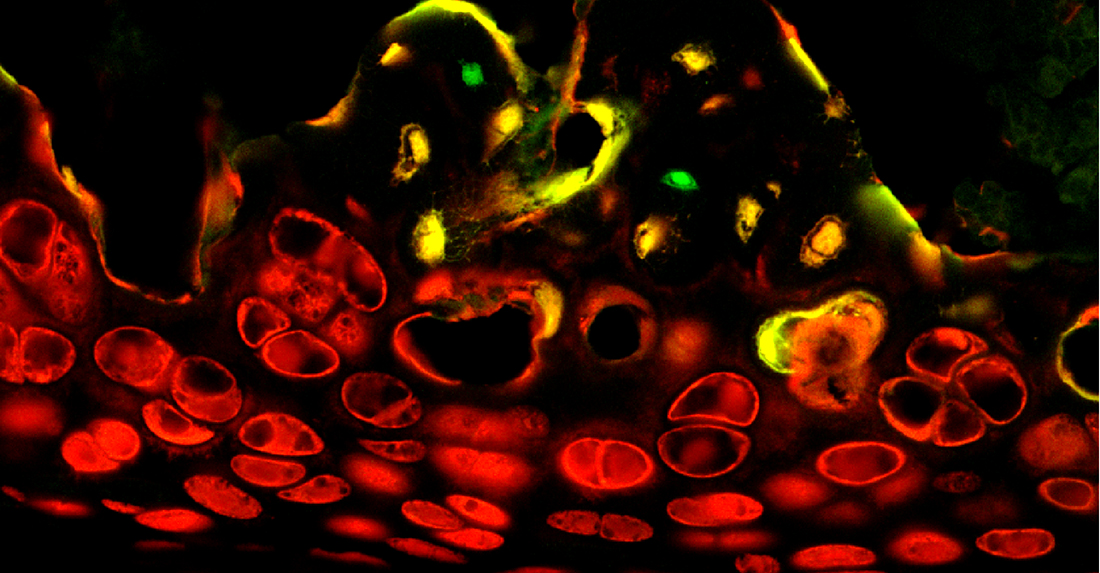Taking a deeper look at bone formation in the temporomandibular joint

For more than four years, researchers at Texas A&M College of Dentistry have been investigating a concept that could turn the current school of thought about bone formation in the jaw on its head.
They were willing to challenge the current mindset that chondrocytes, or cartilage cells, must die before bone cells can form, and they made a critical discovery in the process. Bone marrow cells aren’t the only building blocks of bone in the temporomandibular joint — so too, are chondrocytes. Instead of going to cell death, these chondrocytes directly transform into bone and contribute to forming the ramus portion of the lower jaw.
A $1.85 million grant from the National Institutes of Health – National Institute for Dental and Craniofacial Research will now allow the research team — Dr. Jerry Feng, assistant dean for research and vice chair of biomedical sciences; Dr. Robert Hinton, Regents Professor emeritus in biomedical sciences; and Dr. Yan Jing, research assistant professor in orthodontics — the opportunity to delve further into this work. Funding begins this month and will continue through the end of 2021.
The grant award builds upon multiple published articles, including one in the Journal of Dental Research, which was selected as the JDR Cover of the Year 2015.
Over the next five years, the researchers will study how the cartilage cells directly transform into bone cells during body growth and remodeling, Feng says. They’ll also address the underlying molecular mechanism by which the specific genes regulate cell transformation.
“Finishing this project will provide new knowledge in this understudied area and form a basis for developing novel approaches to prevent, diagnose and treat temporomandibular joint disorders that affect 5 to 10 percent of the population in this country,” says Feng.